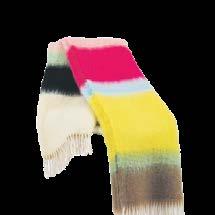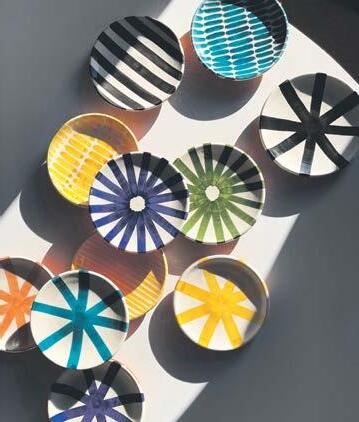
2 minute read
GO LOCAL
When it comes to textiles and ceramics, the Iberian Peninsula has a wealth of amazing producers, writes Julia Begbie
(or street curtains), but Alpujarreño textiles are inexpensive and finding new design markets.
Advertisement

Where I live in Gaucin, the excellent local restaurant Platero & Co has crafted an excellent interior scheme around Hilacar fabrics (curtains, room dividers, and seat cushions), combining these with hessian and local natural materials for a distinc- tive solution that feels just right in our mountain village.


Meanwhile in Madrid, Eduardo Rodriguez Turel, proprietor of Eturel , showcases Alpujarreño fabrics alongside hessian and Canary Island stripes in an explosion of colourful contemporary chic. See his online shop for design and colour inspiration, and for high quality yet relatively inexpensive finished products, such as tablecloths, cushions, bags, and storage baskets.
Historically, the Iberian Peninsula has Berber shepherds to thank for the wool that feeds their mills; the Spanish town of Grazalema grew rich on the wool trade, and iconic Grazalema blankets sit well in traditional and contemporary interiors. Visit Mantas de Grazalema to indulge a taste for the monochromatic. Colour lovers meanwhile, should investigate the premium mohair blankets so beloved of Spanish children; the iconic brand Ezcaray – based in La Rioja and approaching its centenary celebrations - is world-famous for its sumptuous, soft and fluffy, jewel-coloured investment pieces, woven from the hair of Angora goats (above).
Over the border
Crossing the border into Portugal, our next stop is Reguengos de Monsaraz, another hotspot of textile production and home to Fabricaal , a business combining tradition with bold contemporary vision. Fabricaal’s range includes fantastic rugs, and blankets, and the arte facts (bags, cushions, and stools) they create from the product of their looms.

Ceramics
The Iberian Peninsu la is also justly fa mous for heritage ceramics and tiles in colours and patterns to give your home instant regional recognition and personality.
In Spain, the town of Nijar is to ceramics what Bubion is to textiles.

Set the satnav for Avenida Federico García Lorca and browse stalls teetering with stacked pots and colourful plates. Chat to seventh-generation potters like Lorenzo Lores, the current custodian of family Alfareria
Angel y Loli
This family business has been operating since 1755, and Lorenzo still works with the most traditional brown, yellow, green, and blue slips and glazes (manganese, iron, copper, and cobalt, since you ask).
In Portugal, you might want to check out some of the excellent ceramics around the Sintra area.
Take our modernist new-build home in Gaucín, we have introduced contemporary Iberian ceramics to give a sense of location.
Our choice is Casa Cubista , a Portuguese brand that overlays simple designs on traditional base materials, and mixes well with old-style ceramics collected in nearby Morocco.
HILACAR
CHECKLIST: www.jarapahilacar.com
PLATERO Y CO www.platero-gaucin.com/es/
ETUREL www.eturel.com
FABRICAAL www.fabricaal.com/en/
MANTAS DE GRAZALEMA www.mantasdegrazalema.com
EZCARAY www.mantasezcaray.com
ALFARERIA ANGEL Y LOLI www.instagram.com/alfarangelyloli
CASA CUBISTA www.casacubista.com





